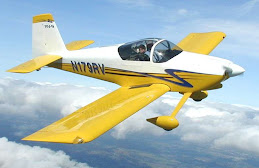Match drilled the HS-904 ribs and HS-905 nose ribs to the spars. Disassembled. Prepared the spar edges. Fabricated the wooden jig and assembled the skin and skeleton of the left HS.
This was my first full Saturday working on the project. As it turned out, I was also able to find time go into the city centre with my wife to have some lunch and shop for some household items.
 In preparation for the project, I would regularly drop into my local Lidl and aldi stores to see what they might have. As a marketing man, I would have told you ten years ago that the idea of a shop that did not have regular stock but instead offered whatever was cheapest from time to time was plain crazy and would never work. Shows you how much I know. In fact, not knowing what they may have increases the 'mystery' and brings me back regularly just to see what they have in. What they have in stock very often includes tools that I would never have thought of owning. Much of it is amazingly cheap stuff probably made in China. However, for very occassional use, it is perfectly fine. I got a router and an electric staple gun that were of great help in building the workshop. All of the plastic storage bins you see in the photos came from this source. I also got a digital level, digital calipers and two engineering-type vices with brackets to attach them to the the side of a bench. These last items really came into play this evening, holding the spars steady while I preped the edges. They will also be used to hold sheet material clamped between two lengths of timber for edge preparation; the rudder skins for example. I will have to see if I can fit them to the table of my bench drill because the vice-grips type clamp I got earlier won't hold thin or small pieces.
In preparation for the project, I would regularly drop into my local Lidl and aldi stores to see what they might have. As a marketing man, I would have told you ten years ago that the idea of a shop that did not have regular stock but instead offered whatever was cheapest from time to time was plain crazy and would never work. Shows you how much I know. In fact, not knowing what they may have increases the 'mystery' and brings me back regularly just to see what they have in. What they have in stock very often includes tools that I would never have thought of owning. Much of it is amazingly cheap stuff probably made in China. However, for very occassional use, it is perfectly fine. I got a router and an electric staple gun that were of great help in building the workshop. All of the plastic storage bins you see in the photos came from this source. I also got a digital level, digital calipers and two engineering-type vices with brackets to attach them to the the side of a bench. These last items really came into play this evening, holding the spars steady while I preped the edges. They will also be used to hold sheet material clamped between two lengths of timber for edge preparation; the rudder skins for example. I will have to see if I can fit them to the table of my bench drill because the vice-grips type clamp I got earlier won't hold thin or small pieces. Again, the edge preparation technique I
Again, the edge preparation technique I am using involves using the file to get a consistent shiny edge with no shear marks, then deburring and finally polishing. I use the bench-mounted Scotchbrite wheel where possible but, if not, I use the 1in wheel in a die grinder. That die grinder sure uses a lot of air.
am using involves using the file to get a consistent shiny edge with no shear marks, then deburring and finally polishing. I use the bench-mounted Scotchbrite wheel where possible but, if not, I use the 1in wheel in a die grinder. That die grinder sure uses a lot of air.


No comments:
Post a Comment